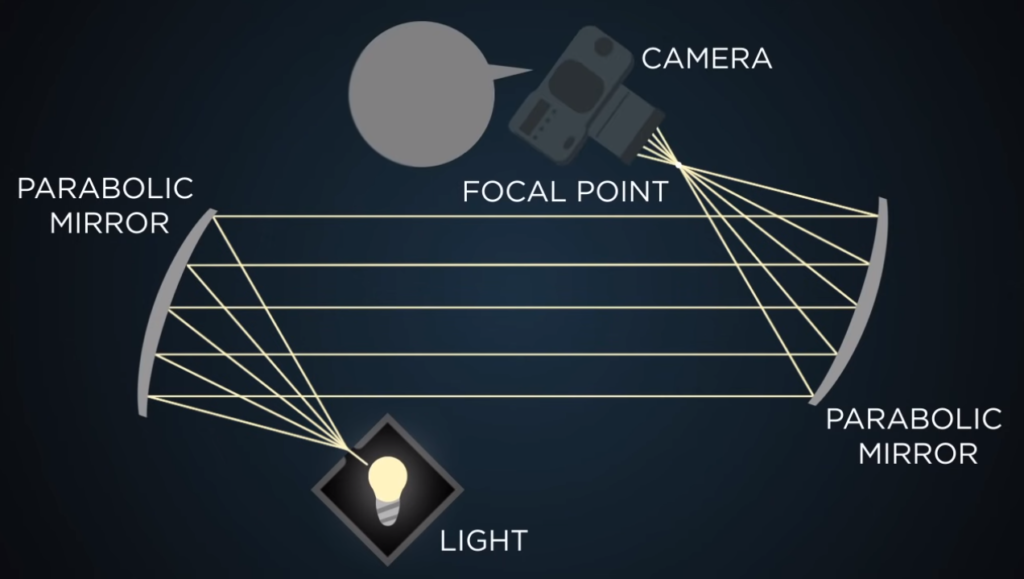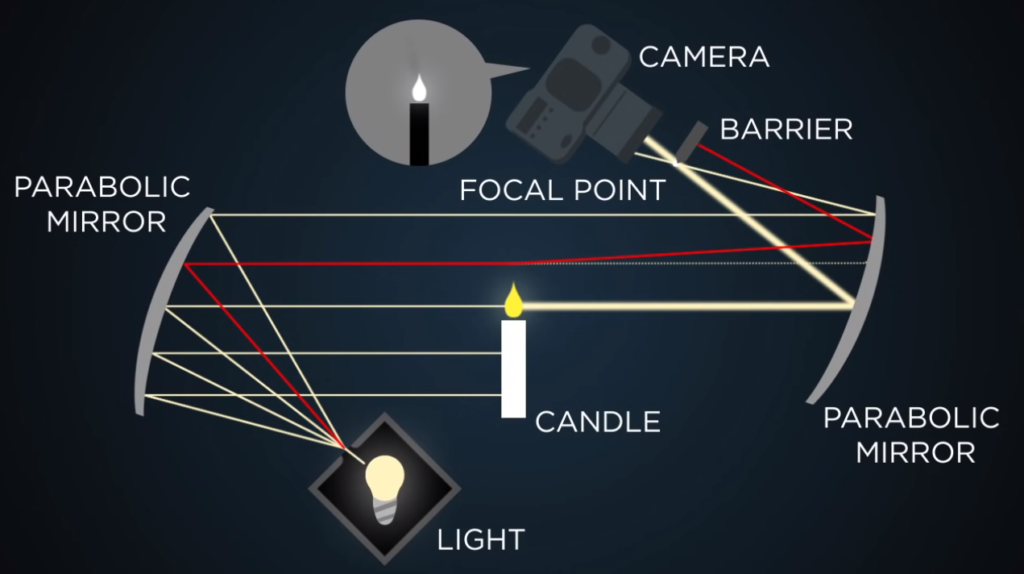
The Shape of Sound
The air on our planet is (mostly) transparent.
Sound is a mechanical phenomenon. A sound is caused by the pressure changing in a medium, as particles of the medium bump into other particles of the medium. Here on Earth, since that medium is air, it’s kind of hard to see a sound wave. Barring some aberrant examples, we see light and hear sound.
However, the universe is full of magic tricks. In a roundabout method, we discovered how we can use light to see sound!
English scientist Robert Hooke, who was the first human to utilize a microscope to view a micro-organism, noticed something odd in 1665, as he messed around with the properties of light. Using a concave lens and two candles, Hooke watched the image reflected from the lens do something odd: it danced.
Hooke became the first person to view a schliere. German for “streaks,” schlieren are “optical incongruities in transparent media.”
The light from one of Hooke’s candles passed through the vicinity of the second candle, which slightly modified the path of the light. This alteration occurs because of what we call the refractive index. This attribute of a medium determines how much light bends – refracts – through a medium. Think of light passing through a prism. Every medium has a refractive index. We hardly notice the bending of light in everyday life because the refractive index of air is very close to the refractive index of light in a vacuum.
However, the refractive index of air is not a monolith. A medium’s index varies with its density. When air heats it becomes less dense. So, the bendiness of light through the air will change depending on the temperature! When light from one of Hooke’s candles passed through the area of the other, it passed through temperature gradients, which caused some angled fun. When we throw mirrors into the mix, some interesting visuals can emerge.

With parabolic mirrors, the above setup becomes possible. A light shining through a slit can bounce off the two mirrors and refocus at a point. We can then place a camera right behind that new focal point.
If we introduce a candle and a new trick, incredible images materialize. The trick is to block some of the light with a fine edge, something like a razor blade. The setup then appears like this:

When we add a candle to the equation, a couple of things happen. The light that hits the body of the candle does not pass, which leaves a shadowed silhouette in our camera. The light that passes through the heated air above the flame will bend more than light normally would, as indicated by the red line in the graphic above. Since we’ve added a barrier, in this case, a razor blade, to the focal point, the red beam is blocked and never reaches the camera.
The result is a darker image that actually reveals distortions in the air. In the case of our setup above, that means we can see the heat from the flame!
Check out the video below for a few examples and a visual demonstration of how the effect occurs:
Interestingly, to Hooke and all the scientists who followed for the next few centuries, schlieren were problems to be avoided. One major use for a parabolic mirror comes in the telescope. For a telescope to be as accurate as possible, distortions are the enemy. Astronomers spent a lot of time making lenses that avoided schlieren.
Today, however, we recognize the positive aspects of the phenomenon, too. Being able to see air currents or distortions is fantastic for research. Now, we employ Schlieren Flow Visualization in the study of aerodynamics and fluid flow.
If you watched the video above, you might have noticed the discussion on visualizing not just the effects of temperature gradients, but also of pressure gradients. And if you recall our brief review of sound waves, you might have pieced together that Schlieren Flow Visualization can allow us to see sound (watch the video below to see it)!

Because sound is so fast – 761 miles per hour – even using the technique requires a bit more manipulation. In the video above, the heat from the handclap is more visible than the sound, since its source is constant. Slowing the speed of the recording significantly, however, actually allows us to watch the sound wave emanating from the hand!
Incredibly, one can demonstrate this complicated effect rather inexpensively and easily. Thanks to light, we can visualize sound!
Further Reading and Exploration
Schlieren System – NASA
Schlieren Imaging: How to See Air Flow! – Inscrutables Workshop
Schlieren Visualization – CalTech
Schlieren – Science Direct











